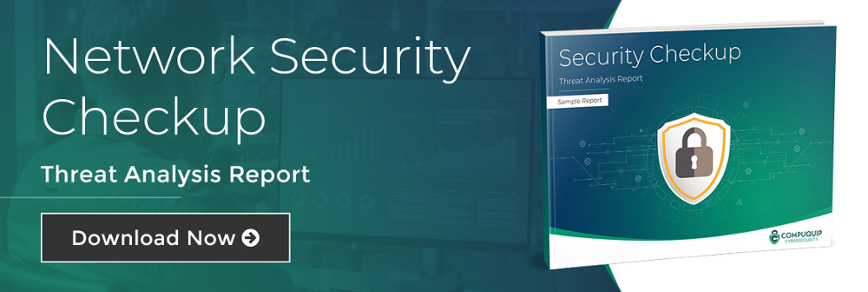How a Network Security Audit Works & Why It’s Important
When most people hear the word “audit,” their first reflex is to cringe. Usually, it means having some outside team come in to review everything and tell them what they’re doing wrong. However, the team here at Compuquip Cybersecurity gets excited about audits—at least, when they’re network security audits, that is.
What is a network security audit, how does it work, and why should you run one?
Explaining Network Security Audits
The network security audit is a process that many managed security service providers (MSSPs) offer to their customers. In this process, the MSSP investigates the customer’s cybersecurity policies and the assets on the network to identify any deficiencies that put the customer at risk of a security breach.
While the specific method of the audit may change from one MSSP to the next, a few basic steps include:
- Device & Platform Identification. The first step of the audit is to identify all of the assets on your network, as well as the operating systems they use. This is vital to ensure that any and all threats have been identified.
- Security Policy Review. Here, the MSSP reviews all of your company’s security policies and procedures to see whether they match up to the standards required to effectively protect your technology and information assets. For example, who has access to what, and do they really need that access?
- Security Architecture Review. Where the policy review assesses your documented policies, the architecture review analyzes the actual controls and technologies that are in place. This builds off of the device & platform identification process to give you an in-depth analysis of your cybersecurity measures.
- Risk Assessment. Here, the MSSP conducts various assessments to characterize your systems (process, application, and function), identify threats, and analyze the control environment to determine what your risks are and their potential impact. This information is then used to prioritize the fixes from the biggest threat that is easiest to remedy to the smallest threat that is the hardest to fix.
- Firewall Configuration Review. A specific security technology that any MSSP will want to review in depth is your network’s firewall. Here, the MSSP should review your firewall’s topology, rule-base analyses, management processes/procedures, and configuration. The MSSP will also likely evaluate the policies for remote access and check to see if the firewall is up to date with the latest patches.
- Penetration Testing. Pen tests serve as a kind of stress test for your network’s security architecture, wherein the testers try to “break” your security architecture so they can find and fix previously-undiscovered issues.
After the audit is complete, the MSSP should provide you with a detailed report telling you what they’ve found. This step is especially important because it helps you discover the risks your company is facing so you can prioritize the most important fixes.
Why You Should Undergo Security Audits Regularly
Network security audits are important because they help you identify your biggest security risks so you can make changes that will protect your company from those risks. That’s pretty common knowledge. However, a network security audit is never a “one-and-done” solution. You’re going to want to run such audits at least once a year (if not more frequently).
Why?
Because, things change—and quickly. Odds are, as your company continues to grow, you’re going to keep adding new hardware to your offices or even whole new office locations. You’ll probably end up adding new software to your business at some point as well.
The thing is that, when you add new hardware to your business, you’re creating new security endpoints as well—potentially creating new security vulnerabilities. New software programs—whether they’re running on the individual devices or on “the cloud” as an SaaS solution—can also introduce new vulnerabilities in your security.
One new piece of hardware or one new software program running on one device might not require a major review of your security architecture. However, over the course of a year, it’s easy to lose track of just how many changes your company has made. By running an annual audit, you can reassemble a complete picture of your network security’s overall status and close up any cybersecurity gaps that may have been introduced in the course of 525,600 minutes’ worth of changes.
While the term “audit” might conjure feelings of dread for some, everyone here at Compuquip welcomes the network security audit—mainly because it helps our customers avoid the worst security risks to minimize their chances of being named on the 6 o’clock news as the latest victim of a cybersecurity breach.
Compared to the expense, loss of reputation, and frustration of a major data breach, the time and effort of carrying out a thorough network security audit is vastly preferable.
Want to protect your business by identifying the biggest vulnerabilities so they can be fixed? Contact Compuquip Cybersecurity to schedule a network security audit today! For more information about building a strong cybersecurity posture, check out our free Cybersecurity Basics guide!

